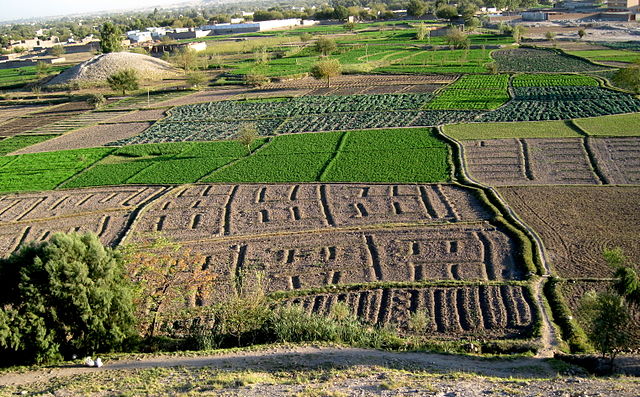Afghanistan’s acting Minister of Agriculture and Irrigation Mawlavi Attaullah Umari (Omari) has highlighted efforts in Afghan agriculture, especially irrigation and fish farming. He was speaking during a meeting in Kabul with Stephen Rodrigues, head of the United Nations Development Fund (UNDP).
The acting Minister urged the building of irrigation canals and the monitoring of existing dams to expand the country’s reservoir network.
By mid-January 2025, the government had implemented 17 small-scale reservoirs in Badakhshan province to the northeast. The construction of these projects amassed 11 million Afghani ($145,420).
Irrigation along agriculturally important rivers has also been under the spotlight for it is here key exports like walnuts grow. During the recent meeting, the acting Minister cited rivers Murghab in the northwest, Kunar in the northeast and Harirud in the center.
Some of the bigger rivers such as Amu Darya (Amooz) and Harirud have huge potential because they are navigable.
Small-scale Fish Farms
The same wave of projects is saturating the aquaculture sector, which currently boasts 2,870 fish farms countrywide, Xinhua reports.
According to Radio and Television Afghanistan, all such farms produce some 13,000 tonnes of fish per year.
Some of these farms are large-scale while the bulk are small and medium, but their number is still low. An insider at the Ministry of Agriculture foresees this total rising to 3,500 with the help of the private and NGO sectors.
Wheat
Apart from fish farming, NGO projects in wheat, poppy, livestock and irrigation niches have mushroomed via mainly the UN.
The Food and Agriculture Organization (FAO) reports that its 2024 wheat projects provided yearly food for 20% of the national population.
FAO’s success stories include Fazel Seddiq, who says his 2 jerib (0.4 hectares) of wheat looks onto yielding 2600 kg of grain. When this happens, this production will be equal to 66,875 Afghani ($976) in cash sales based on local wheat prices.
Fazel is among 5.88 million individuals or 840,000 households that the FAO wheat program serves with certified seeds, as of 2024.
This is why the Ministry of Agriculture’s promise to implement irrigation projects bodes much with the help of non-governmental players. Irrigation has helped Afghan agriculture to contribute a huge fraction of the economy, per the statistics below.
Afghan Agriculture Statistics
Afghanistan has one of the highest agricultural representations of the economy at 34.5% of the GDP (2023), according to the World Bank. Only Somalia, the Comoros, Liberia, Mali and Niger have higher representations. While this may indicate poor industrial growth, at least it shows resilience in basic food production activities. While the world’s average agriculture-to-GDP representation has decreased from 7.1% in 1981 to 4.1% in 2023 Afganistan’s has steadied.
What are the top agricultural commodities of Afghanistan?
While wheat leads in all agricultural production, fruits and livestock goods are also noteworthy. According to FAOSTAT’s 2023 data, grapes (1,086,000 tonnes), raw cow milk (1,950,896 kiloliters), watermelon (943,668 tonnes) and potatoes (889,000 tonnes) led production.
Is Afghanistan a major fish-eating nation?
In per capita terms, the country has a low fish consumption rate of over 2 kg per person per year, as of 2021.
What is the development status of fish farming?
Despite major rivers passing through the country, Afghanistan’s fish farming sector is still developing. For one, the government cites 13,000 tonnes in yearly aquaculture production by fish ponds.
Does Afghanistan produce much wheat?
With 3.8 million tonnes of wheat output in 2022, Aghanistan is one of the top 30 wheat-producing nations.
